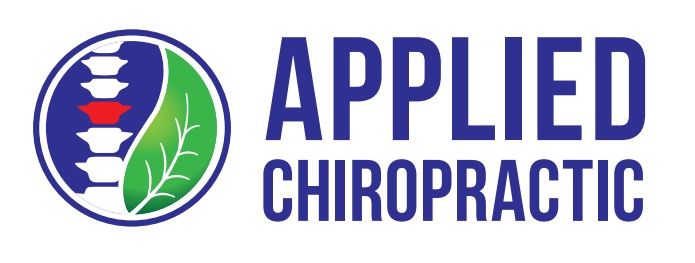Understanding the benefits of chiropractic treatment is a complicated endeavour. First, one must understand that there are many types and variations of chiropractic and there are as many different ways to practice chiropractic as there are chiropractors.
Generally, they first take a medical history, perform a physical examination, and may order lab tests or diagnostic imaging to determine if treatment is appropriate for your pain or other problems. The treatment plan may involve one or more manual adjustments in which the doctor manipulates the joints, using a controlled, sudden force to improve range and quality of motion. The chiropractor at Applied Chiropractic also incorporates extensive nutritional counselling and exercise/rehabilitation into the treatment plan. The goals of chiropractic care include the restoration of function and prevention of injury in addition to pain relief.
Many of those coming for their first visit are looking for one goal: relief of pain. We encourage patients presenting for pain treatment to continue care after the initial pain is gone because the problem that caused the pain in the first place must be corrected to prevent the return of pain.
Spinal manipulation and chiropractic care is considered a safe, effective treatment for acute low back pain, the type of sudden injury that results from moving furniture or having a slip and fall. Acute back pain, which is more common than chronic pain, usually lasts no more than six weeks and typically gets slowly better on its own. Research has shown chiropractic to be helpful in treating neck pain, headaches, and back pain both chronic and acute. In addition, osteoarthritis and fibromyalgia may respond to the moderate pressure used by chiropractors and practitioners of deep tissue massage.
As all treatment is based on a diagnosis of your problem, the patient should inform the chiropractor regarding your medical history, including ongoing medical conditions, current medications, traumatic/surgical history, and lifestyle factors.
The overall benefit of regular chiropractic treatments include maintaining proper movement of the spinal and extremity joints to provide the flexibility required for exercise and enjoyment of physical activities. This also provides the input to your nervous system to give you better balance for your chosen activities and to prevent falls.
Proper joint movement and good balance contribute to good posture. Poor posture distorts the alignment of bones, chronically tenses muscles, and contributes to stressful conditions such as loss of vital lung capacity, increased fatigue, reduced blood and oxygen to the brain, limited range of motion, stiffness of joints, pain syndromes, reduced mental alertness, and decreased productivity at work. Strong muscles keep your body upright and allow you to move. Good muscle strength and balance are critical to maintain proper posture and minimize muscle tension. Your muscles function much like the cables and ropes that hold up the mast of a sailing ship. If the wires are equally strong on all sides, the mast will stand up straight. If one of the wires becomes weak or breaks, the mast will lean either to the side or to collapse. The same is true with your body. If the muscles on all sides of your spine are balanced and strong, your body will stand up straight and strong.
As with any medical treatment, there are risks that accompany treatment. Although rare, there have been cases in which treatment worsened a herniated or slipped disc, or neck manipulation resulted in stroke or spinal cord injury. At this Clinic we will discuss the risks versus the benefits of the proposed manipulative treatment. To be safe, always inform your primary health care provider whenever you use chiropractic or other pain relief alternatives.
